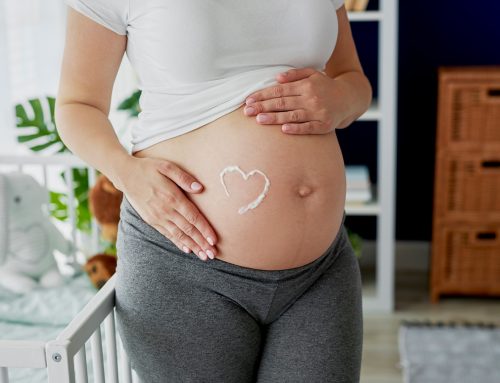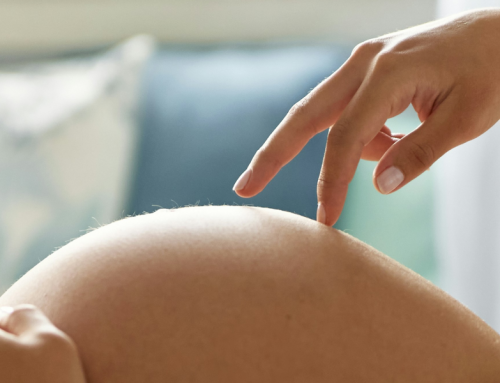The standard practice of transferring only one embryo is used primarily to minimise the possibility of multiple pregnancies (which are always risky pregnancies) and because it has been shown that implanting two embryos can reduce the chance of becoming pregnant by more than a quarter.
Studies on embryo culture show that, in these cases, the body tends to focus on the poorer quality embryo and to reject pregnancy. On the other hand, in the studies carried out, the chances of pregnancy in IVF with 2 frozen embryos of good quality only slightly increase the pregnancy rate compared to the transfer of 1 single embryo (in no case does it double it), and yet it greatly increases the rate of multiple pregnancies, which should always be avoided, especially in patients over 35 years of age. Therefore, at present, the current approach is to freeze the embryos obtained for future transfers. One after the other, if the first one does not succeed.
In other words, freezing embryos may be a much more feasible option than placing 2 embryos in a single transfer. In fact, the likelihood of getting pregnant increases with the number of transfers rather than the number of embryos. In the case of transfers, it reaches its maximum when all available transfers are performed in three consecutive attempts or cycles.
What does an embryo transfer involve?
An embryo transfer is the final stage of in vitro fertilisation (IVF). In an IVF cycle we often obtain several eggs by stimulating the ovaries and these eggs, when brought together with sperm, become fertilised, resulting in the creation of embryos.
Embryo transfer consists of placing the embryo – which we have fertilised outside the uterus – inside it. Now it is no longer just an egg, it is an embryo, a future baby. That embryo is loaded into a catheter that we pass through the vagina and cervix and into the womb, where we then deposit it. For all these reasons, it is now current practice to transfer a single embryo into the woman’s uterus.
This is a process that is carried out in a consulting room adjacent to the laboratory, although it almost never needs anaesthesia, sedation may be used if necessary in some cases, to relax both the patient and the uterine smooth muscles.
How many embryos are usually transferred in IVF?
As we said, there is no advantage to transferring more than one embryo, apart from shortening what is called “patient fatigue” (which would be to undergo a new transfer if the first one does not work). As fertility specialists, we have to focus on the chances of achieving pregnancies with healthy babies and the most effective way to do this is by single embryo transfers.
For this reason, we must choose the most suitable embryo (in some cases, this means carrying out genetic tests on the embryos in order to choose the most suitable one each time). Even so, there are very specific situations in which two embryos are chosen while knowing the risks involved, especially in cases where there have been several failures in the past.
Therefore, when we have many high quality embryos to transfer, it is common for the patient to raise the question of what to do. Should we go for a transfer of one embryo or should we try for a transfer of two? Which is the most advisable option to achieve a pregnancy?
Success rate in a transfer of 1 embryo and a transfer of 2 embryos
The probability of a positive result in the transfer of 1 embryo can be around 60%, although the range would depend on the patient’s age. If we take into account the cumulative probability of pregnancy, this would be around 85%, reaching 98% after three attempts of available transfers or consecutive cycles. On the other hand, in the case of a transfer of 2 embryos, the likelihood of a positive result is practically the same.
As mentioned earlier, transferring two high-quality embryos can greatly increase the chances of multiple pregnancy, but only slightly increase the chances of pregnancy. When we transfer two embryos, not only may the rate of miscarriage be higher, but also that of pregnancy complications.
In Vitro Fertilisation using donor eggs
In egg donation, and having had three complete cycles using an embryo at the blastocyst stage, there is a cumulative probability of pregnancy of 98%.
The probability of getting pregnant increases with the number of transfers, reaching its highest when all available transfers in three consecutive attempts or cycles have been carried out.
Probability of pregnancy → ● 1st cycle ● 2nd cycle ● 3rd cycle
Probability of pregnancy →
● 1st cycle
● 2nd cycle
● 3rd cycle
Cumulative rate 2nd and 3rd cycle: estimated probability of pregnancy that would be obtained upon carrying out 3 consecutive cycles. A cycle being regarded as the transfer of all the embryos generated.
Positive BETA – hCG test result (> 10 IU/L) 14 days after the embryo transfer.
Data audited by Bureau Veritas for the period 2018-2020 at Eugin Barcelona
In Vitro Fertilisation using one’s own eggs
Eggs naturally lose their reproductive capacity as part of an irreversible process that tends to intensify after the age of 35.
Under the age of 35
35 to 37
38 to 40
41 to 43
Over the age of 44
Probability of pregnancy → ● After the first attempt ● After all attempts within the same cycle
Probability of pregnancy →
● After the first attempt
● After all attempts within the same cycle
Positive BETA – hCG test result (> 10 IU/L) 14 days after the embryo transfer.
Data audited by Bureau Veritas for the period 2018-2020 at Eugin Barcelona
Does the likelihood of pregnancy in IVF change according to age?
The woman’s age is a relevant variable when calculating the chances of a natural pregnancy. Trying to get pregnant at 40 is not the same as trying to get pregnant at 23, for example. In this regard, the decision to transfer 1 or 2 embryos at the age of 40 may depend on other factors in addition to success rates. It is in these cases that treatments such as in vitro fertilisation can help to increase the chances of success. In cases of older women, egg donation is one of the most recommended treatments, as it involves the use of eggs from a young donor which, when fertilised, becomes a pre-embryo that, once in the uterus, can continue its development.
For a woman under 35, using her own eggs, the IVF success rate is about 55%. For a woman over 40, this drops to 27% when using her own eggs, a rate that increases when donor eggs are used.
Do the chances of having twins through IVF increase according to the number of embryos?
Throughout this article, we have talked several times about this issue: by opting for a transfer of 1 embryo instead of transferring 2 embryos, we aim to reduce the risk of multiple pregnancy, as well as the chances of having twins using in vitro fertilisation. The frequency of a twin pregnancy after transferring one embryo is between 1 and 2%, while the rate of multiple pregnancy by transferring 2 embryos from a young patient can be between 25-30% for pregnant women. This is possible because even if one embryo is transferred, it can still divide (up to day 13 after fertilisation).
If we add to this the fact that at Eugin we have managed to reduce the probability of multiple pregnancies in In Vitro Fertilisation treatments to 1 in 100, the transfer of a single embryo backed by the implementation of time lapse technology is particularly recommended for patients with a good prognosis. The average number of embryos transferred has also decreased from 1.35 to 1.04 in IVF using donor oocytes, and from 1.8 to 1.4 in IVF using the patient’s own eggs.







